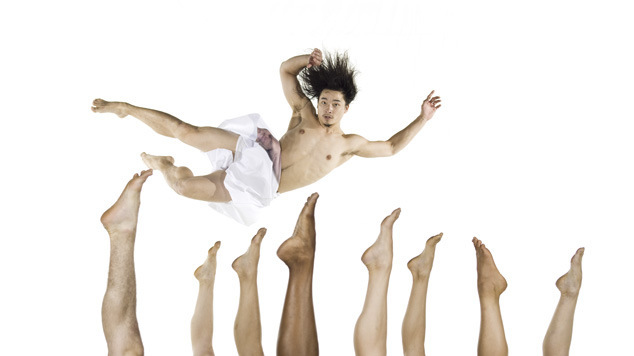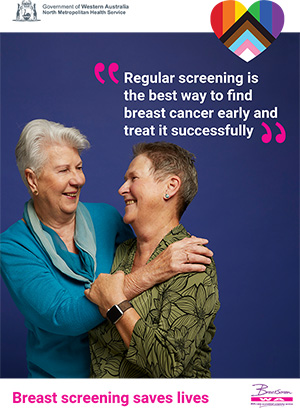 Australian Dance Theatre are returning to Perth to present their work ‘Be Your Self’. We chatted to Artistic Director Garry Stewart about the contemporary dance piece, a career in choreography and the changing landscape of arts funding in Australia.
Australian Dance Theatre are returning to Perth to present their work ‘Be Your Self’. We chatted to Artistic Director Garry Stewart about the contemporary dance piece, a career in choreography and the changing landscape of arts funding in Australia.
With Be Your Self, how did the idea for that first come about?
“Be Your Self” is about the nature of self-hood and it actually began with me having Buddhist meditation sessions at work for the past 5 years, once a week or once every couple of weeks and in those sessions we had a Buddhist monk who was talking to us a lot about the nature of I and the self and de-centering that from our view of the world.
So in that question about “What is I?” I began thinking about what is the nature of I from various perspectives, from the perspective of Western philosophy and neuroscience and this quest for trying to understand what is consciousness of self so it started off with that but it really traveled a long, long way from that and now it begins with this question of “Are we the body?’ and that’s this quiet echo, quite a kind of wacky and cartoonish kind of take on that question so, it really did journey a long way from the philosophical and the introspective into this kind of quite wildly… entertaining and wacky piece.
It’s an intriguing topic for dancers to tackle because as dancers you’re so much about the body.
I think that’s what was interesting in looking at the nature of “what is the self?” because the body is completely implicit in notions of what the self is, I think for historical reasons we seem to think of the mind as being separate from the body somehow but really, if we look at current neuroscience, emotions and the self and consciousness is all really caught up in our bodies, they’re one and the same thing.
What would we be, for example, if we didn’t have a body in the experience of fear: when your heart rate increases and you tremble and sweat and our lips quiver so certainly the piece broaches that.
There’s also an actress involved and throughout the work she’s articulating the most complex and extraordinary physiological language in relation to the biochemistry of emotions and the physiology of emotion.
We work with a professor of physiology as well, from Flinders Medical Centre here in Adelaide who assisted me in writing that text. Having said that, somehow we’ve made selfhood this quite surreal and comic and entertaining expression of all of those very complex ideas.
I’ve read you also worked with an architectural firm in the design for this show. As a filmmaker I found the language of architects very different from the language of filmmaking, do you find it challenging to communicate with someone from a different field?
Not really, because there’s always an intersection. Architects are primarily interested in human bodies and human behavior and creating spaces that humans occupy and in some ways a building is like a body as well.
I think my case, they all come from an art background anyway so it’s quite an easy negotiation even though now they’re making incredibly ambitious and extraordinary landmarks around the world, they always want to maintain their interest in art and practice.
I was reading last year you were an artist in residence at NIDA, what was that experience like?
All up I spent about 3 or 4 months there. I made a new work, created something from the ground up with the second year students for their end of year shows and we performed that at Carriageworks, it was called Choreography.
It was a kind of an interesting work to do with a group of actors but the piece itself starts off as a kind of ironic, reflexive work that parodies in many ways the processes of making dance and working in theatres and the concerns of theatres and festivals and choreographers and moves from that into a position on choreography being a metaphor for all sorts of kinetic phenomena in the world, how all processes that involve repeatable patterns whether its economics or the reproductive system or the process of death, all of those processes in some ways relate to the task of choreography.
The choreography itself is also a task that embodies patterns of kinetics and movement and trying to understand the world through creating compositional movement forms out of it.
How did your life in dance start? When did you decide choreography was the way?
I actually was studying Social Work at university so I started dance quite late, I didn’t start until I was 20. I was and saw Sydney Dance Company back in the day, since I’m from Sydney, and from that moment forward I was blown away and that’s what I had to do and I was compelled to do it.
It really is one of those classic stories of being struck by lightning and changing your life overnight and pursuing an artistic career so I think in some ways my body drove me into dance, it was really a response of my body to seeing dance that I just had to do it and I entered into it quite naively, I didn’t realize it would be as hard as it actually is.
It’s an extremely difficult discipline to master but I became quite obsessed with it and lo and behold, I entered into choreography and I’ve been choreographing since the early nineties. I danced for a few years with a few companies but I had an interest in choreography from the beginning.
I can’t imagine being a dancer who doesn’t want to choreograph but there’s a few dancers who don’t!
There are plenty of dancers who have no interest in choreography at all and find it really baffling and they just want to dance! I totally understand, but that was never completely my interest.
My interest in being a dancer was the thing that transitioned me into choreography and I think both those things were there from the beginning.
Particularly male dancers that start late, always have an interest in choreography, they always have some kind of conceptual and academic interest that stems beyond dancing itself and wanting to bring those two things together. To bring the arena of critical thought into dancing.
It used to be pretty common for guys to start dance quite late in comparison to women, is that becoming less so as time goes on?
When I was at the Australian Ballet School in the early 80s, I think I was one of the last male dancers they took on that was a little bit older, they’d always take on one or two guys that was a little bit older than the others, but now they’re all 16 with perfect physiques for classical ballet because there’s so much more choice now, so many more guys are getting into dance and it’s obviously more socially acceptable.
Dancing has had its moment in some ways through popular culture with ‘So You Think You Can Dance’, ‘Dancing with the Stars’, all of those expressions of dance through television and movies, I think it’s a general acceptance of dance. I think people were quite mystified by what it is but I think now everyone kind of gets it.
You’re the longest serving artistic director of ADT, how do you keep creatively refreshed?
I do lots of different projects, I always have lots of different irons in the fire and I’m working on multiple projects in different media and different arenas. I also work outside of ADT, for NIDA, I was also artist in resident at Deakin University and I made a show using 3D technology.
I’m also doing a Master of Fine Arts at the University of New South Wales, making video installation work. I’m working on a feature film that I’ve been working on for a few years. I manage to keep my creativity alive through being involved in different areas of thought. They all tend to speak to each other so that’s the good thing. You find youself making a number of works that have dialogue with each other and inform each other and progress a singular idea, or even a number of ideas.
I think at the moment there’s a couple of different strands to the thinking of my work. One is neuroscience and the nature of emotions and consciousness and the self and the other area is nature. I’m making a couple of works, one’s on the topography of domestic objects and who we we relate to the topography of nature and then another piece I’m making is about rhythms in nature called ‘The Beginning of Nature’.
As part of a large arts company, have you had any thoughts on the cuts to funding by George Brandis?
I’ve had plenty of thoughts on that but I think initially the news was quite devastatingbecause it happened so fast, there’s been no discussion or preliminary understanding of it, it just came completely out of the blue just as we thought we were going to enter into 6 year agreements with the Australia Council and really consolidate our funding and our position so I think it’s been a bit of an assault to a lot of people.
Particularly through the sheer suddenness of it and the dramatic nature of hwo it was done. Since recovering from the initial news, I think now we’re just looking at how we can work with what’s on offer in the most positive way possible.
I think because the money has shifted, the money’s still there, it would be even worse if it was completely gone. The other thing is that I think we all need to lobby, those who were on sustained core funding, to get that back again.
I think to have a sensible dialogue once the dust has settled about what we need and just get as many people on board to tell our story of what our companies are and how important they are and the significance of what we do and arrive at a position that’s amicable and sustainable.
Australian Dance Theatre’s ‘Be Your Self’ is at the State Theatre Centre in Perth from June 24 – 27.
Graeme Watson, Image: Chris Herzfeld Camilght Productions




